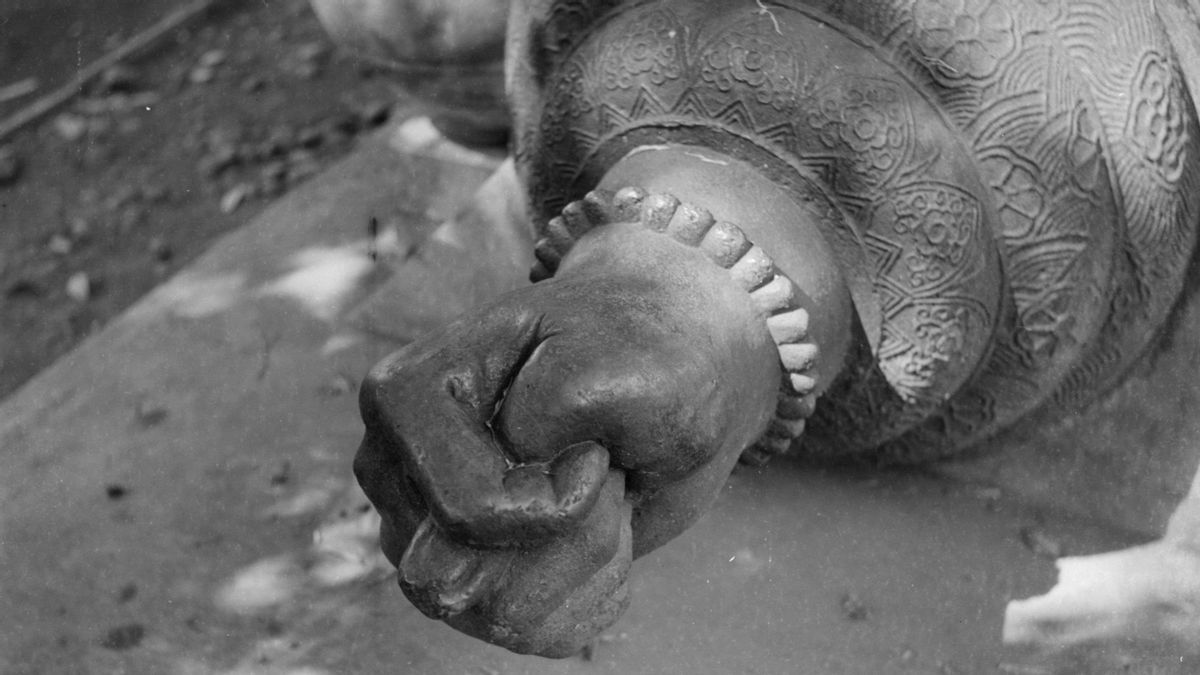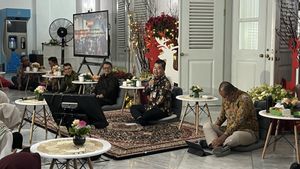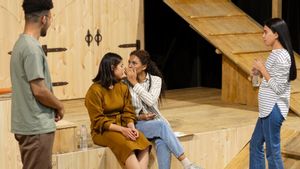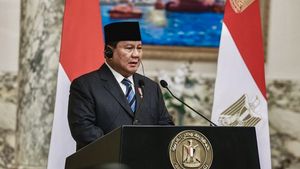JAKARTA - The magic of the Kota Tua tourist area is not only proven by the presence of the Jakarta History Museum, the Art and Ceramics Museum, and the Wayang Museum. Right in the middle of the third courtyard of the museum, in Fatahillah Park, there is an interesting sight in the form of a historic cannon. The Jagur Cannon, his name.
The Portuguese cannon has an interesting shape. The rear of the cannon is in the form of a "thumb clamp" fist. This form describes two suppositions. First, as a symbol of intercourse. Others interpret it as a mystical symbol of fertility that was believed by people from the Hindu era.
Adolf Hauken, in the book Historical Places in Jakarta, explains the meaning of a fist which is also called mano in fica. He explained that mano in fica, which means a symbol of intercourse, made many people make Jagur a sacred thing.
"In the past, women sprinkled flowers on the face of this' talisman 'on Thursday. Afterward, they sat on the cannon,'" it said.
It is said that Si Jagur, who used to be in Kota Intan - an area near Kasteel Batavia - is considered to be powerful. In fact, people come to ask for a mate, wealth, until the most are descendants. All of them believe that Jagur is able to fulfill these requests.

Popularity
Because of its popularity, in the early 20th century, everyone recognized this cannon with a weight of 3.5 tons, 3.85 meters long and a barrel diameter of 25 centimeters. HCC Clockener Brousson, a Dutch soldier who had served in Batavia, wrote this impression in the Early 20th Century Batavia. Brousson's visit at that time was accompanied by a guide named Abdullah.
The visit awakened Brousson to his fame and how sacred the large cannon, aka the grote canon, was. Abdullah explained the condition in Dutch with a distinctive accent.
"Here many indigenous people pray and make offerings for the spirits." Abdullah said, pointing to the pile of rice, fruit and flowers in the shaded sun surrounding the cannon.
Abdullah then continued, those who believe that cannons can provide fertility do not only come from the natives. The Chinese, and even Indo, were made to believe that they came to the sacred cannon location while giving offerings as the main requirement for facilitating rituals.
Equally, believers also equip themselves with positive suggestions, if the cannon is pleased, the desire to have children will be achieved. That is the suggestion that continues to spin in the heads of the visitors. Either because the cannon was powerful or just a coincidence. What is clear, news related to sacred cannons can bring fertility has been so ingrained in the mind and developed by word of mouth.
This condition made many people who did not believe in the existence of any power in the cannon lost their minds. Even the government at that time considered this condition to be in a disturbing stage, because it had turned pilgrims into shirk.
For this reason, the cannons that were previously left on the side of the road were immediately transported to the National Museum and became one of the collections there, accompanying other collections such as statues, statues, masks, first money to ceramics. However, that didn't stop people. The sacred visit also moved to the museum where Jagur did not budge.
One interesting incident related to the moment when people asked for descendants at the National Museum was told by Wahyono Martowikrido, who has been an employee of the National Museum since 1964 - 1998. He tells the story through the book Stories from Gedung Arca, whose contents are related to museum visitors.
He said, "One day an old man in a cap came, coming far from Cirebon for such a purpose. He wanted to have grandchildren. Two daughters. One was married but had no children, even though it had been a long time. he went to the old cannon, prayed and gave alms. "
After that, go home the father. A year later, he came again. However, this time it was not accompanied by a prayer to ask for offspring, but only bursting out with anger. When one of the officers saw that he was kicking the 4-ton cannon, the officer was amazed and asked: Why, you asked for descendants, asked for a grandchild a year ago. Why are you getting angry now?
The father then replied, "Yes, but this Jagur is insolent. I also have grandchildren, only my grandchildren were born from my unmarried child!" The answer was greeted by laughter from the museum employees. One of them joked: As it turns out, Jagur could have got the wrong address.
The end of Jagur's magic
That was the phenomenon of Jagur when he was at the National Museum. On the one hand, museum employees can benefit from being brought donations and offerings by visitors. The other side is quite a hassle. The case is, once there was someone who came from outside the area specifically to visit Si Jagur by bringing offerings in the form of live chickens.
The relocation plan was rolled out again. Abdul Chaer, in the book Foklor Betawi, writes the moment of the transfer of Si Jagur to the backyard of the National Museum. "Because of that (often triggering shirk), the cannon was moved to the backyard of the former City Hall (Stad Huis) building in Fatahillah Park, West Jakarta which was used as the Jakarta Museum. The cannon has now reportedly been moved back to the front page and can be seen by the public, "it said.
Thanks to the relocation to the front yard, Fatahillah Park, the strategy of reducing pilgrims who believed the cannons were sacred paid off. Those who wish to visit are no longer visible, except for local and foreign tourists who don't know any longer the long story, historical or mystical.
The only thing that tourists can understand is the information right next to the cannon, which reads a summary of stories from some literature that does not contain how this cannon was once worshiped as a karamat cannon. The contents are more or less like this: Ex me ipsa renata sum which means I am born again from myself. Made by the Portuguese in Macau, near mainland China, who invoked Manuel Tavares Baccarro, the famous gun cast expert who had lived in Goa - India - as a cannon maker.
The cannon, which was once part of Fort Santo Jago de Barra, was then moved to the Portuguese Fort in Malacca. After Malacca was swept away by the Vereenigde Oostindische Compagnie (VOC) in 1641, this was the first door to the recognition of the cannon because it was transported by the VOC to the Old City of Batavia. To this day, Si Jagur is firmly in Fatahillah Park. Even though it is no longer sacred, the historical side of this cannon should be admired. Amazed by its shape, in awe of its weight, and in awe of its story.
The English, Chinese, Japanese, Arabic, and French versions are automatically generated by the AI. So there may still be inaccuracies in translating, please always see Indonesian as our main language. (system supported by DigitalSiber.id)










